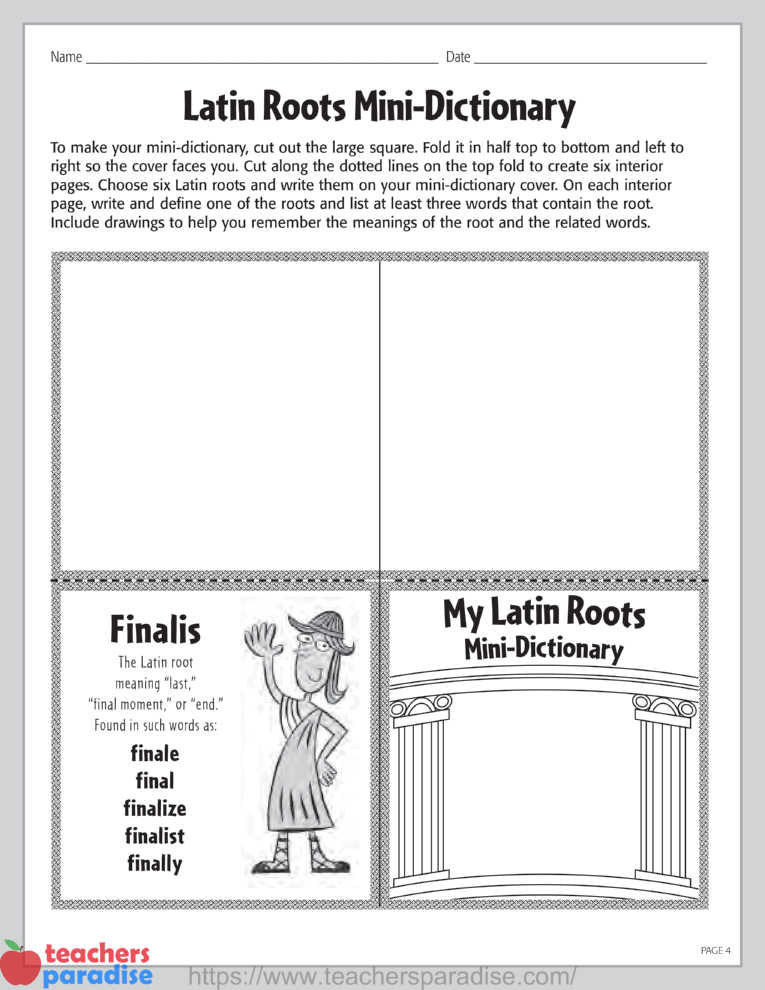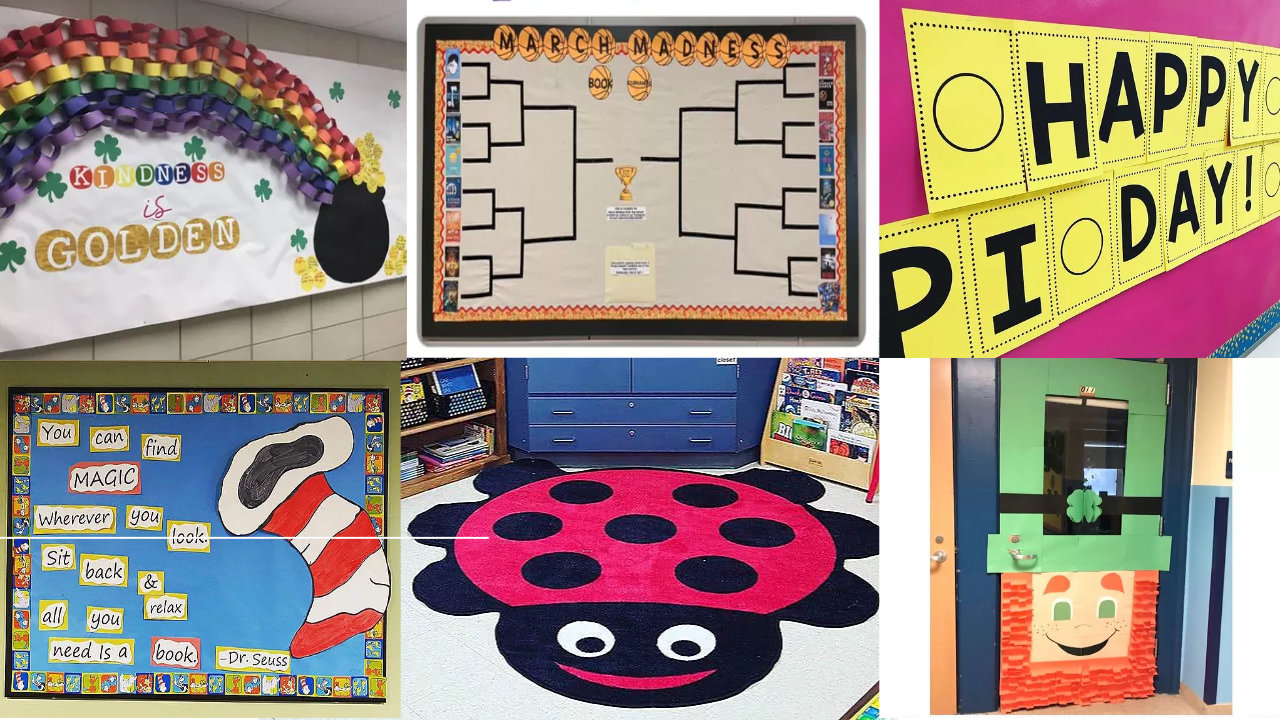Latin Vocabulary INTRODUCTION
INTRODUCTION: English has been borrowing from Latin even before English was a language! Groups who conquered England, the Angles and Saxons in the fifth century and the French-speaking Normans in the eleventh century, added a variety of Latin-based words from their native languages to the developing language we call Old English. Later, during the Renaissance, many Greek and Roman classics were revived, and the translators did not always bother to replace ancient Greek and Latin words with “modern” English ones. Thus, these words too became part of the ever-evolving language. To this day, Latin roots are often used to create new words in English. It is estimated that more than 50 percent of our current vocabulary derives, either directly or indirectly, from Latin.
WORKSHEET & Sample PDF Activity
Sample PDF Activity
MATERIALS:
A dictionary; sticky notes; one copy of each reproducible page per student; crayons, coloring pencils, or markers; scissors
GETTING STARTED:
Write the words auditorium, audible, and audience on the chalkboard. Ask students to notice what they have in common. (All begin with the letters a-u-d.) Add to the list other words students can think of that share this root. (These include: audio, audition, audit, and auditory.) Then challenge students to look for similarities among their meanings. Given what they notice, can students guess what the Latin root aud might mean? Lead students to the conclusion that aud is a Latin root meaning “to hear.”

MORE LATIN ROOTS:
Cover the remaining Latin roots definitions on the poster with sticky notes, leaving the roots and sample vocabulary words visible. Then display the chart on a chalkboard. Point out that the roots can appear at the beginning, middle, or end of a word. Write any additional words students can think of that share the same root on the chalkboard, directly beneath those on the poster. Challenge students to use the definitions of those words they know to determine the meaning of the common root. Then uncover the sticky note so students can see if they were right. (Point out that students may see Latin roots written in several ways, depending on the source. For example, man may also appear as manus.) Distribute page 1 to each student as a reference page for the remaining activities.
EASY AS UNI-, BI-, TRI-:
Teaching prefixes—many of which come from Latin—will also improve students’ ability to decode unfamiliar words. Challenge students to brainstorm words not included on the chart that contain the prefix bi. (These include: biopsy, biannual, biennial, biathlon, bicuspids, biceps, and binoculars.) Working from the meanings of those words with which they are already familiar, see if students can surmise what the Latin prefix bi means. Lead students to the conclusion that bi refers to two, twice, or both things. (For example, bifocals allow you to see both near and far.) For more practice with numberrelated Latin prefixes, have students complete page 3.
CREATING A LATIN ROOTS MINI-DICTIONARY:
Have students create a quick reference guide for Latin roots. Distribute a copy of page 4 to each student (or pair). Let each choose six Latin roots. Possibilities include: alt (high), bell (war), cent (one hundred), fort (luck), med (middle), port (carry), and vac (empty). Following the directions on page 4, demonstrate to students how to use the reproducible to make their own Latin roots mini-dictionary. When they are finished they should have an eight-page mini-dictionary with a cover listing the six selected roots and each of the interior pages showing one of the root words, its meaning, and a list of words containing that root. Encourage students to draw cartoons or pictures to help them remember the root words. Use the last page, “Finalis,” as a model. When students are done, invite them to share and display their mini-dictionaries.























